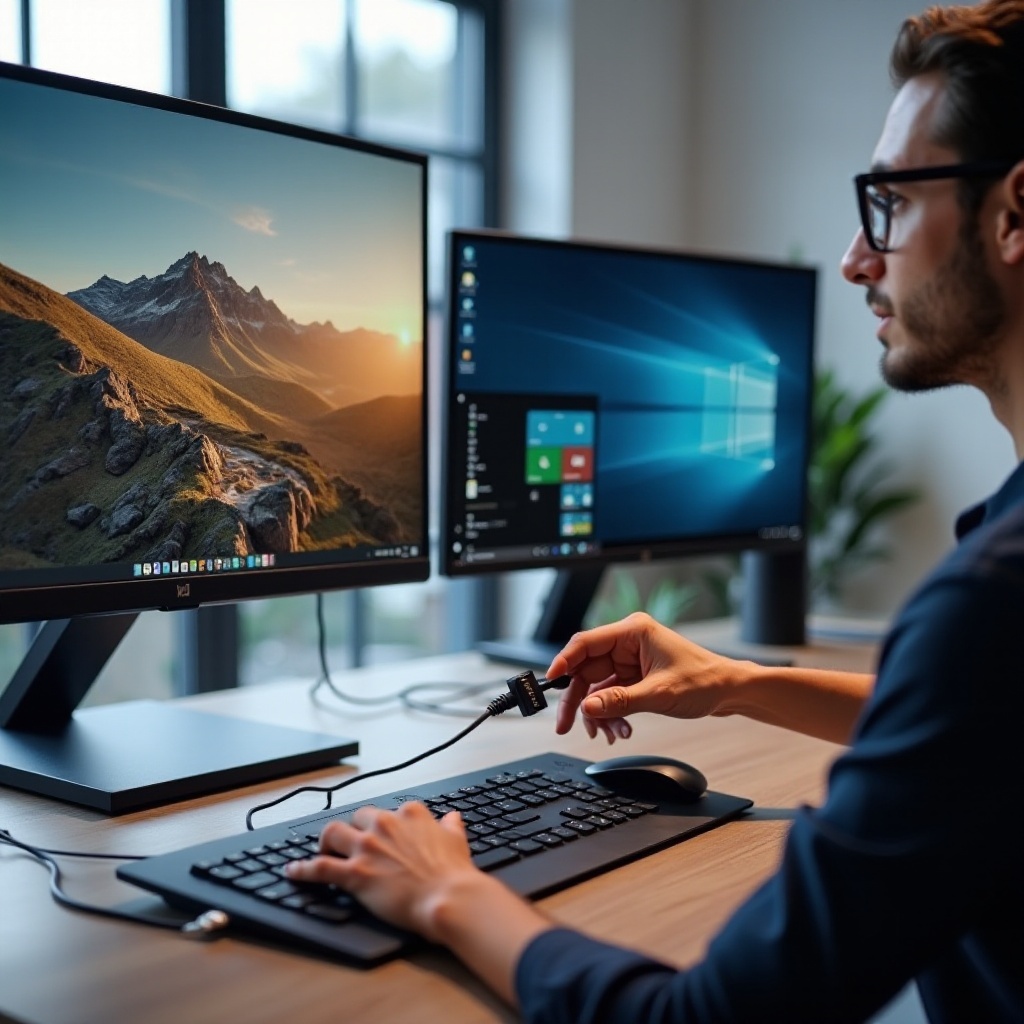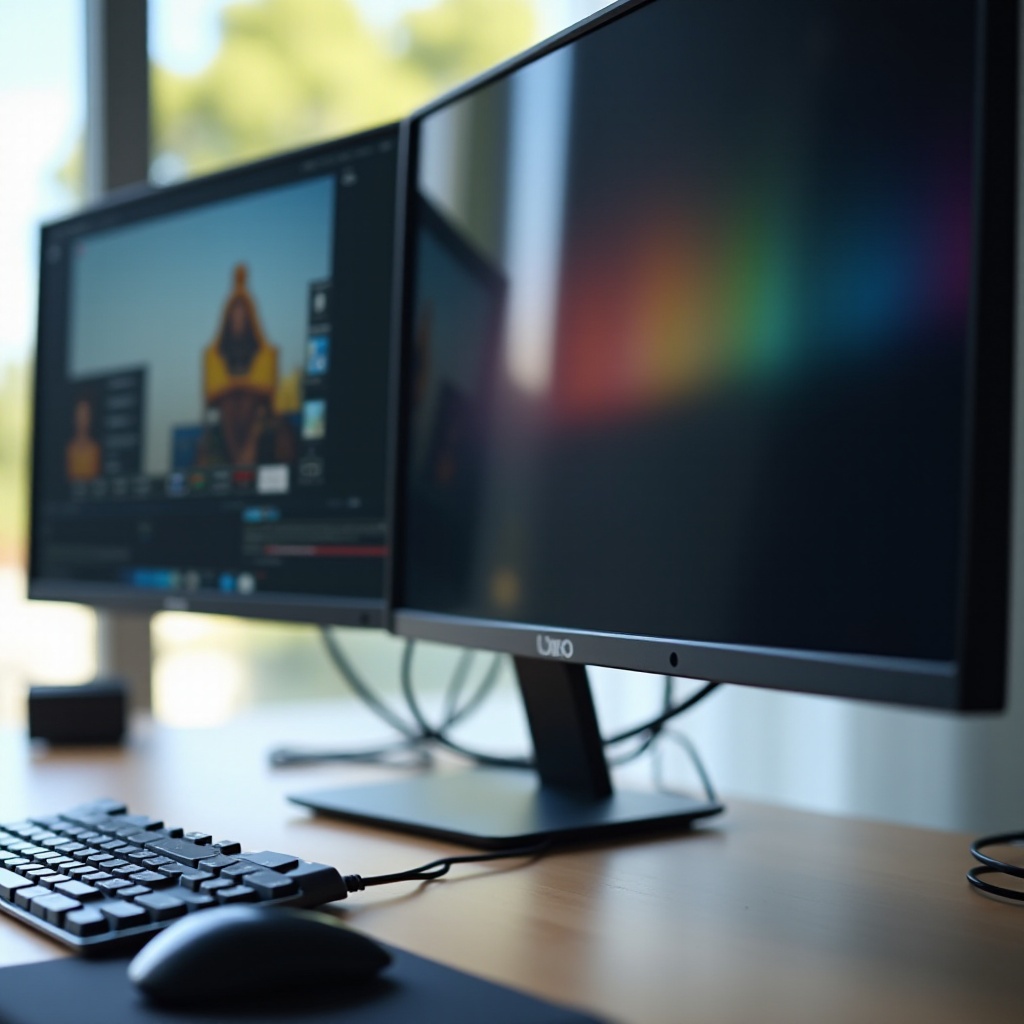How to Fix Second Monitor Flickering with DisplayPort: A Complete Guide
Introduction
Experiencing flickering issues with your second monitor can be incredibly frustrating, especially when you’re relying on a seamless multi-monitor setup for productivity or gaming. DisplayPort is a powerful technology designed to deliver high-quality video and audio, but it can sometimes be plagued by monitor flickering. This guide aims to help you understand the causes of second monitor flickering with DisplayPort and provide you with step-by-step solutions to resolve the issue.

Understanding DisplayPort Technology
DisplayPort is a digital display interface developed by the Video Electronics Standards Association (VESA). It’s commonly used to connect a video source to a display device and is known for providing superior performance compared to other connection types like HDMI and DVI. DisplayPort supports higher resolutions, greater bandwidth, and daisy-chaining multiple monitors through a single connection, making it a popular choice for professionals and gamers alike.
Despite its advantages, DisplayPort is not immune to issues such as screen flickering. Several factors can contribute to this, ranging from hardware problems to software configurations. By understanding the technology and potential pitfalls, you can better diagnose and address any flickering issues you encounter.
Identifying the Causes of Second Monitor Flickering
Knowing what could be causing your second monitor to flicker is crucial in finding the right fix. Here are the most common causes:
- Faulty Cables: Damaged or low-quality DisplayPort cables can lead to signal degradation, resulting in flickering.
- Outdated Drivers: Both monitor and graphics card drivers need to be up-to-date to ensure compatibility and optimal performance.
- Incorrect Display Settings: Incorrect resolution or refresh rate settings can cause screen flickering.
- Hardware Issues: Problems with the monitor itself, the graphics card, or other hardware components can lead to flickering.
Understanding these causes will guide you in troubleshooting and resolving the flickering issues effectively.
Troubleshooting Flickering Issues
When facing flickering issues, you can follow these steps to diagnose and fix the problem:
Check and Replace Cables
- Examine your DisplayPort cable for any visible signs of damage, such as fraying or bent connectors.
- Ensure that the cable is securely connected to both the monitor and the graphics card.
- If possible, test with a different DisplayPort cable to see if the flickering persists. High-quality, VESA-certified cables are recommended for the best performance.
Update Monitor and Graphics Drivers
- Check for any available updates for your monitor’s firmware. Visit the manufacturer’s website for the latest updates.
- Update your graphics card drivers through the manufacturer’s website (NVIDIA, AMD, or Intel). Often, driver updates include fixes for compatibility issues.
- For Windows users, you can also use Device Manager to update your drivers automatically.
Configure Monitor and Display Settings
- Adjust your display settings to match the native resolution and refresh rate of your monitor. This can usually be done through your operating system’s display settings.
- For Windows:
- Right-click on the desktop and select ‘Display settings.
- Scroll down to ‘Advanced display settings.
- Ensure the resolution and refresh rate match the monitor’s specifications.
- On Mac:
- Open ‘System Preferences.
- Select ‘Displays.
- Adjust the settings as needed.
Test Hardware Components
- If you suspect a hardware issue, try connecting the monitor to a different computer. If the flickering stops, the issue might be with the original computer’s hardware.
- Alternatively, test a different monitor with the same DisplayPort connection to determine if the problem lies with the monitor or the graphics card.
- Ensure your graphics card and other internal components are properly seated in their slots inside the computer.

Advanced Solutions and Techniques
If the basic troubleshooting steps do not resolve the flickering, you may need to consider more advanced solutions:
- Use DisplayPort 1.2: For older monitors, ensure they are set to DisplayPort 1.2 mode. This setting can often be found in the monitor’s on-screen display menu.
- Reduce Cable Length: Longer cables can result in signal loss. Use shorter, high-quality cables to minimize interference.
- EMI Shielding: Electromagnetic interference (EMI) can cause flickering. Use cables with better EMI shielding or ensure your setup is away from potential sources of interference.
Preventive Measures for Avoiding Future Issues
To prevent future issues with monitor flickering:
- Routinely check and replace cables if they show signs of wear and tear.
- Regularly update your monitor and graphics card drivers.
- Avoid using adapters or converters that may degrade the signal quality.
- Invest in high-quality, VESA-certified cables for the best performance.

Conclusion
Second monitor flickering with DisplayPort can be a challenging issue, but by understanding the causes and following the steps outlined in this guide, you can effectively troubleshoot and resolve the problem. Regular maintenance and the use of quality components can also help avoid future issues, ensuring a smooth and flicker-free multi-monitor experience.
Frequently Asked Questions
Why does my second monitor flicker only when using DisplayPort?
Flickering specific to DisplayPort can be due to various factors including faulty cables, outdated drivers, incorrect display settings, or hardware issues.
Can a faulty cable cause monitor flickering?
Yes, a damaged or low-quality DisplayPort cable can cause signal degradation, leading to monitor flickering.
How do I know if the issue is with my graphics card or my monitor?
Test the monitor with another computer or test a different monitor with the same computer. This will help you determine if the issue lies with the monitor or the graphics card.

